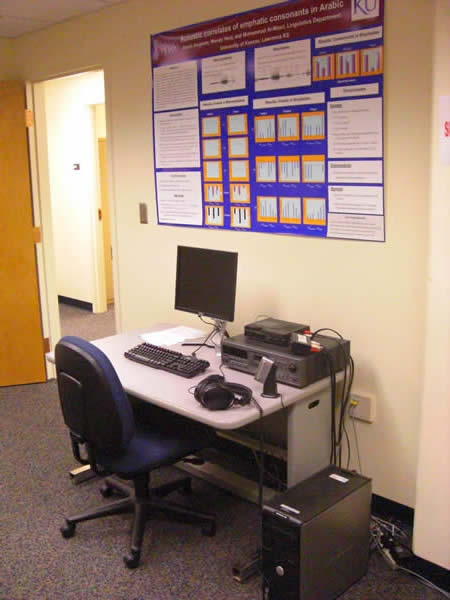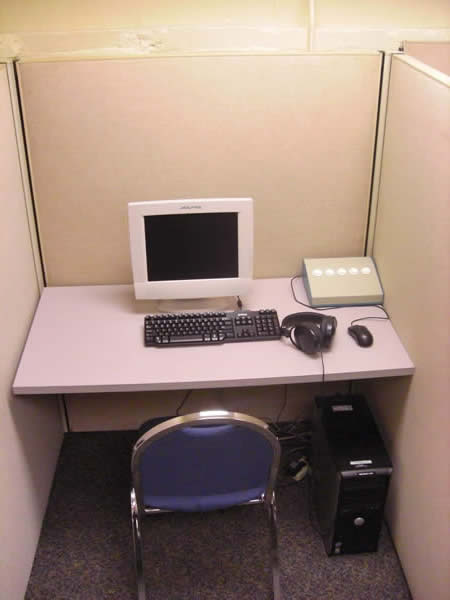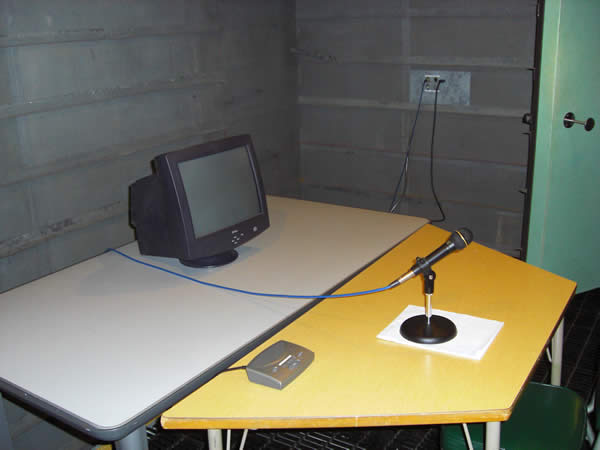Facilities
The University of Kansas Phonetics and Psycholinguistics Laboratory (KUPPL) provides an integrated environment for the experimental study of speech and language, including its production, perception, and acquisition. Primary research areas are acoustic and auditory phonetics as well as spoken and written word recognition, all across a variety of languages. KUPPL is well-equipped for the experimental study of speech and language. As part of the Linguistics Department, the Laboratory consists of 7 adjacent rooms and covers about 1,500 sq. ft in Blake Hall. Its primary computers for speech research are 10 Dell PCs, which are primarily used for speech analysis using Praat and Multi-Speech (Model 3700, Kay Elemetrics) software, for speech synthesis using HLsyn software, word processing, statistics, and acquisition and manipulation of speech signals in MATLAB.

In addition, KUPPL has four Dell PC-based speech perception stations on which specialized Paradigm software (Perception Research Systems) is implemented. This software is designed to present stimuli and collect subjects' responses, including reaction times. Stimuli can be presented auditorily and visually with or without feedback. Up to four subjects can be tested simultaneously. Files manipulated in Praat, MultiSpeech, or generated by HLsyn, can be easily transferred for speech perception experiments. An additional PC is housed in a separate room dedicated to naming (auditory shadowing) experiments.

A separate room houses the MacQuirer 16 system (Scicon), a portable multichannel data acquisition system for the acquisition and analysis of oral and nasal airflow as well as oral air pressure data. Running on an Apple Powerbook G4, this aerodynamic set-up is located in a separate dedicated room. It is also compact enough to be portable if you would like to take it to the field. See the Macquirer page to learn more.
Recently, KUPPL added a head-mounted eye-tracker (EyeLink II) for psycholinguistic research. This set-up consists of 2 PCs, one for stimulus presentation, the other for collection and analysis of responses.

Audio recordings are made in an anechoic chamber (IAC) in the basement of adjacent Fraser Hall (a 2-minute walk from KUPPL) on a solid-state recorder (Marantz PMD671) for noise-free recording.

An ERP laboratory for the study of speech, language, and its disorders is also available. This lab was set up by Professors Mabel Rice (Child Language Doctoral Program, Dept. of Speech-Language-Hearing) and Allard Jongman with funding from the University of Kansas Research Development Fund. Housed in the Dole Human Development Center (a 5-minute walk from KUPPL), the lab has a 128-channel EEG/ERP system, manufactured by EGI with adult- and child-sized nets.
Funding for our research equipment is provided by NIH, NSF, and the University of Kansas.